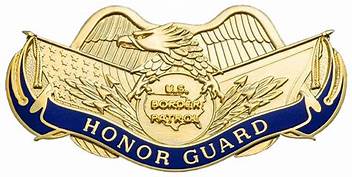Homeland Security Department Should Re-Instate the All-Hazard Framework

One year prior to the incoming President Barack Hussein Obama administration, the Bush administration released what was being called their plan for confronting “All-Hazards” which signaled the beginning of the Department Homeland Security (DHS) addressing security and public safety emergencies in addition to its anti-terrorism, border security, immigration enforcement and other duties.
Instead of calling the DHS exclusively a United States law enforcement and security coalition, it also took on man-made and natural disasters.
On Tuesday January 22, 2008, President George W. Bush and the US Department of Homeland Security (DHS) released their newly formulated National Response Framework (NRF), the successor to the National Response Plan.
The NRF, which focuses on response and short-term recovery, articulates the doctrine, principles and architecture by which our nation prepares for and responds to all-hazard disasters across all levels of government and all sectors of communities. The NRF is responsive to repeated federal, state, local and private sector requests for a streamlined document that is less bureaucratic and more user-friendly. The NRF also focuses on preparedness and encourages a higher level of readiness across all jurisdictions.
 The NRF is being released following an extensive process of outreach and coordination between DHS and key stakeholders representing federal, tribal, state and local governments, non-governmental agencies and associations, and the private sector.
The NRF is being released following an extensive process of outreach and coordination between DHS and key stakeholders representing federal, tribal, state and local governments, non-governmental agencies and associations, and the private sector.
The latest public comment period for the base document of the NRF closed on Oct. 22, 2007 and the comment period for the support annexes closed on Nov.10, 2007. The final documents reflect the nearly 5,700 comments received from participants—including the National Association of Chiefs of Police—in the process.
“The National Response Framework is an essential tool for emergency managers at all levels,” said Bush’s Homeland Security Secretary Michael Chertoff.
“It helps define the roles, responsibilities, and relationships critical to effective emergency planning, preparedness and response to any emergency or disaster. Today’s release reflects the culmination of many months of hard work and collaboration within the nation’s emergency management community,” he said.
The NRF is intended for senior elected and appointed leaders, such as federal department and agency heads, state governors, mayors, tribal leaders, city managers and the private sector. Simultaneously, it informs emergency management practitioners by explaining the operating structures and tools routinely used by first responders and emergency managers at all levels of government.
In addition to releasing the NRF base document, the Emergency Support Function Annexes and Support Annexes will be released and posted at the NRF Resource Center an online repository of the entire component parts of the NRF. The annexes are a total of 23 individual documents designed to provide concept of operations, procedures and structures for achieving response directives for all partners in fulfilling their roles under the NRF.
Upon finalization and publication of the NRF base document and the annexes, a large focus will be to initiate an intensive nationwide training and exercise program to embed the NRF into the nation’s preparedness and response cycle. Implementation of the NRF training and exercise strategy will include awareness training, position-specific training, exercises (tabletop and functional), and sustainment training.
To make the NRF a living system that can be revised and updated in a more nimble, transparent fashion, the NRF Resource Center was developed. The Resource Center will allow for ongoing revisions as necessary to reflect real-world events and lessons learned.


